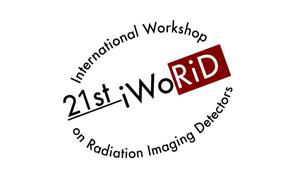Speaker
Description
Noise magnitude in absorption x-ray tomographic (CT) images is strongly dependent on the detector pixel size and/or the geometrical magnification. For this reason, when constraints in terms of radiation dose or scan time are present, as in clinical or animal studies, high resolution CT imaging at acceptable noise levels is not feasible. In this context, the use of propagation-based phase-contrast technique (PhC) coupled with the application of a suitable phase-retrieval filter (PhR), is a valuable tool to overcome this limitation. In fact, at fixed radiation dose, the noise dependence on the (effective) pixel size when the PhR filter is applied is much shallower with respect to conventional absorption CT images.
This has been quantitatively modelled by Nesterets and co-workers [1], who demonstrated that the image noise is proportional to the inverse of the square of the effective pixel size in case of absorption imaging (i.e., no PhR), while the application of PhR introduces an additional term, mitigating the dependence of noise on the pixel size. In particular, within the validity conditions of the ray-optical approach (i.e., Fresnel number larger than 1), smaller effective pixel sizes correspond to a larger noise reduction due to the PhR, thus amplifying the difference between images reconstructed with or without phase retrieval. Moreover, it has been shown that, when coupled to propagation-based PhC imaging, the only effect of PhR is to reduce image noise while preserving the same spatial resolution that would be observed in conventional absorption images [2, 3].
Along with phase effects, in-vivo imaging can take advantage of high-Z direct-conversion photon-counting detectors, ensuring both high efficiency and spatial resolution, that is mainly limited by the pixel dimension.
In this presentation, experimental results, based on a large (~10 cm) surgical breast specimen, are compared with the described theoretical model. The measurements have been performed at the Italian synchrotron radiation facility Elettra (Trieste, Italy), by using a large-area CdTe photon-counting detector (Pixirad-8), featuring a 60 µm pixel pitch and ensuring a nearly total absorption efficiency at the selected beam energy (30 keV). In addition to the native pixel spacing, the acquired projections have been rebinned to simulate pixel pitches of 120, 180 and 240 µm (see figure) and the sample has been imaged at three magnifications (1.05, 1.1 and 1.4). The results, expressed in terms of signal-to-noise ratio (SNR) gain due to the PhR application, show a good agreement between theoretical predictions and experimental data at all pixel pitches, quantitatively demonstrating the importance of going towards detectors featuring smaller pixels (or higher spatial resolution) to fully exploit the advantages of PhC and PhR. SNR gain up to a factor of 20 is observed at the smallest pixel pitch and largest magnification. At the same time, as predicted theoretically, larger magnifications correspond to a lower image noise (or higher SNR) due to the effect of the PhR algorithm: this trend is unparalleled in absorption CT imaging where larger magnification (i.e., smaller effective pixel sizes) leads to a higher noise.
[1] Nesterets, Yakov I., Timur E. Gureyev, and Matthew R. Dimmock. "Optimisation of a propagation-based x-ray phase-contrast micro-CT system." Journal of Physics D: Applied Physics 51.11 (2018): 115402.
[2] Gureyev, Timur E., et al. "On the “unreasonable” effectiveness of transport of intensity imaging and optical deconvolution." JOSA A 34.12 (2017): 2251-2260.
[3] Brombal, Luca, et al. "Phase-contrast breast CT: the effect of propagation distance." Physics in Medicine & Biology 63.24 (2018): 24NT03.
